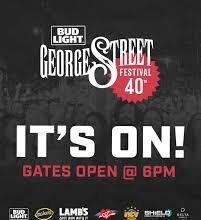In an industry where platinum sales once defined success, Drake has just rewritten the rulebook. The Toronto-born artist has officially secured his place in music history by earning more Recording Industry Association of America (RIAA) Diamond certifications than any other artist in the organization’s 70-year history.
The achievement comes as Drake’s 2018 smash hit “God’s Plan” surpassed the 10-million-unit sales mark this month, joining his growing collection of Diamond-certified tracks that includes “Hotline Bling,” “One Dance,” and the now-iconic collaboration with Rihanna, “Work.” This milestone pushes Drake past previous record-holder Post Malone, establishing him as the undisputed commercial titan of modern music.
What makes this achievement particularly remarkable isn’t just the sales figures, but the cultural ubiquity they represent. In an era where streaming has fragmented audiences and shortened attention spans, Drake has somehow managed to create songs that transcend momentary virality to become genuine cultural touchstones.
“Diamond certification represents something far beyond commercial success,” explains music industry analyst Marie Dupont. “It signals a rare cultural consensus in an increasingly divided media landscape. These aren’t just songs that people liked—they’re songs that defined entire years, moods, and moments.”
Drake’s dominance also highlights a fascinating shift in how we measure musical achievement. While critical acclaim once stood as the primary marker of artistic significance, commercial milestones have taken on new meaning in the streaming era. Each Diamond certification represents not just purchases but billions of streams across platforms—a testament to how deeply these tracks have embedded themselves in our collective listening habits.
The path to this record wasn’t without controversy. Throughout his career, Drake has weathered criticism about everything from his authenticity to his artistic evolution. Music purists have often dismissed his work as calculated or formulaic, yet the numbers tell a different story—one of unparalleled cultural resonance.
What’s perhaps most interesting about Drake’s Diamond collection is its diversity. From introspective ballads to club anthems, his record-breaking catalog defies easy categorization. This versatility has allowed him to remain relevant through multiple cultural shifts, adapting to changing tastes while maintaining his distinctive artistic voice.
For aspiring artists, Drake’s achievement sets a new benchmark that may prove difficult to surpass. The fragmentation of music consumption means future artists will likely need to build success across multiple platforms simultaneously—a challenge Drake navigated before most industry executives even recognized the changing landscape.
As we reflect on this milestone, it’s worth considering what it says about our current cultural moment. In a time when algorithm-driven recommendations increasingly shape our listening habits, Drake’s widespread appeal suggests there’s still room for artists who can speak to universal experiences and emotions.
Will we see another artist break this record in the coming years? The shifting nature of music consumption makes prediction difficult, but one thing remains clear: Drake’s achievement marks not just personal success, but a fascinating chapter in how we measure, consume, and celebrate music in the digital age.
Follow more cultural analysis and music industry insights at CO24 Culture and keep up with emerging trends at CO24 Trends.











